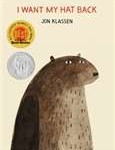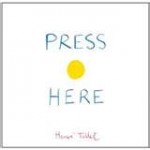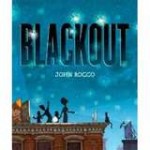Rah, Rah, Radishes!
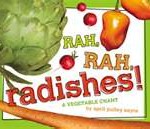 Three cheers for April Pulley Sayre and Rah, Rah, Radishes! A Vegetable Chant! How do you make healthy eating fun? With Sayre’s vibrant photos of vegetables taken at her local farmer’s market paired with her contagious rhymes:
Three cheers for April Pulley Sayre and Rah, Rah, Radishes! A Vegetable Chant! How do you make healthy eating fun? With Sayre’s vibrant photos of vegetables taken at her local farmer’s market paired with her contagious rhymes:
“Oh boy, bok choy!
Brussels sprout.
Broccoli. Cauliflower.
Shout it out!”
Start your lesson by asking students, “What do you think kohlrabi is? How about fennel? Rutabaga?” Read Rah, Rah, Radishes! and see if your kids can discover what those uncommon words mean. Encourage kids to chime in as you reread (“Go, green bean!”) Play “Cross the Line”: all the kids stand one one side of the classroom and imagine an invisible line down the middle of the room – or put down tape if your maintenance team won’t go nuts. Say “Cross the line if you’ve tried broccoli,” asparagus, the vegetables listed in the book. Have kids brainstorm vegetables that didn’t make the book. Is a tomato a vegetable? Find out in the back of Sayre’s book! If you have time and funds, bring in some vegetables for kids to try! Take photos of the vegetables and have kids use those Logic Smarts to sort the photos – by color, by part of plant (root, stem, leaf, or fruit), by which they liked and which they didn’t. With all the gorgeous colors of fresh produce, you can make a “color wheel” using vegetables – challenge kids to eat a rainbow! Rah, Rah, Radishes, hooray healthy eating, and super job, Ms. Sayre!
For more information, visit aprilsayre.com.
Read MoreMy Pick for St. Patrick’s Day
 In the past, I’ve had rotten luck finding a good book to share with wee ones on St. Patrick’s Day, but I think I’ve found gold with this one: Jamie O’Rourke and the Big Potato: an Irish folktale by Tomie dePaola. Jamie O’Rourke is the laziest man in all of Ireland, never doing a lick of work. He stumbles upon a leprechaun, and the clever leprechaun convinces Jamie that instead of taking his gold, he should wish for the world’s biggest potato – then he’d never have to worry about food again! Jamie grows the biggest potato, enough to feed the town, enough for everyone to eat their fill until they wished they’d never see another potato again! Jamie then makes a deal that satisfies the villagers and his own lazy nature, and the clever leprechaun gets to keep his gold.
In the past, I’ve had rotten luck finding a good book to share with wee ones on St. Patrick’s Day, but I think I’ve found gold with this one: Jamie O’Rourke and the Big Potato: an Irish folktale by Tomie dePaola. Jamie O’Rourke is the laziest man in all of Ireland, never doing a lick of work. He stumbles upon a leprechaun, and the clever leprechaun convinces Jamie that instead of taking his gold, he should wish for the world’s biggest potato – then he’d never have to worry about food again! Jamie grows the biggest potato, enough to feed the town, enough for everyone to eat their fill until they wished they’d never see another potato again! Jamie then makes a deal that satisfies the villagers and his own lazy nature, and the clever leprechaun gets to keep his gold.
If you’re looking for some quick, inexpensive, fun activities to do to celebrate St. Patrick’s Day, bring in some potatoes and this book. After hearing the story, little ones can play “Hot Potato” by passing around a real potato. If your ears can tolerate kid music (for me, it depends on the day I’m having!) the Wiggles have a song called “Hot Potato” that my littlest ones love. You can make stamps from the potatoes to dip in paint and use to make patterns for an art and math activity. If you have a green thumb (and don’t we all on St. Patrick’s Day?) you can show kids a potato with “eyes” and talk about how a potato grows. I’ve seen lessons where teachers start the budding process by putting potatoes in a brown paper bag and leaving it in a closet, I’ve seen ideas for suspending the potato with toothpicks in a jar of water – I even found a website: http://growyourownpotatoes.com/with teacher resources to get you started! Even black-thumbed folks like me can usually get a potato to bud, so a fun science experiment can grow from one Irish folktale. Now that’s magical!
Read MoreThis Leap Year – Stick!
 With a title like Stick, you might not think this book by Steve Breen will work for a Leap Year celebration, but it will! Stick is an independent young frog; he likes to do things on his own, thank you very much. He doesn’t want help from his mom or anyone, until he “bites off more than he can chew” by zapping a dragonfly with his tongue. Now Stick is stuck – to a wildly flying dragonfly who pulls him, by the tongue, through the swamp and into New Orleans. His crazy adventure (which involves being plastered to the face of a motorcyclist and soaring on the beak of a seagull) brings him home only after he realizes that sometimes it’s good to ask for help.
With a title like Stick, you might not think this book by Steve Breen will work for a Leap Year celebration, but it will! Stick is an independent young frog; he likes to do things on his own, thank you very much. He doesn’t want help from his mom or anyone, until he “bites off more than he can chew” by zapping a dragonfly with his tongue. Now Stick is stuck – to a wildly flying dragonfly who pulls him, by the tongue, through the swamp and into New Orleans. His crazy adventure (which involves being plastered to the face of a motorcyclist and soaring on the beak of a seagull) brings him home only after he realizes that sometimes it’s good to ask for help.
After singing “Five Green and Speckled Frogs” (I encourage kids to leap like frogs every time one jumps into the pool), try this cooperative learning activity. We encourage our kids to be independent and that’s good, but it’s also good to be able to ask for help and to work as a team. For kids who prefer to do tasks alone, cooperative tasks can be challenging – especially if those kids feel they’d be able to complete the job better on their own! For a great cooperative learning activity, give your students jigsaw puzzles that are relatively challenging. Let them work in pairs or teams to put the puzzle together. This activity won’t be graded, so independent students who worry about others negatively affecting their grades can rest easy. Make sure the puzzles are hard enough to show those Self Smart kids that some things really are easier when we work together. It’s such a fun way to learn teamwork, you won’t want to wait four more years for your next Leap Year party to try it!
Read MoreThe Piggy in the Puddle
 “See the piggy,
“See the piggy,
see the puddle,
see the muddy little puddle.
See the piggy in the middle
of the muddy little puddle.”
This classic tongue-twisting pig tale, The Piggy in the Puddle, by Charlotte Pomerantz and James Marshall is almost 40 years old, and it is still pure fun to read aloud. The muddy little piggy in the middle of the puddle is told by her family that she must come out of the “squishy-squashy”, “mooshy-squooshy”, “oofy-poofy” mud. Her reply? “Nope!” So what’s a pig to do but join her? Soon the whole family, “big and little”, are “in the very merry middle.”
After you’ve read this book through once just for fun, see if your listeners can keep a simple beat for you as you read it aloud again – just make sure the beat isn’t too fast or you’ll end up tongue-tied! You can use this book with preschoolers through third graders to talk about sounds. Little ones can focus on beginning sounds of P and M, older ones can sort words with short i or short u sounds, or look for “double letters”. For a super-simple craft (because that’s how I roll), I die-cut pigs for kids to glue to construction paper, and then, using just one fingertip (so we wouldn’t end up muddy like the pigs) we dabbed brown paint on our paper to make mud puddles and muddy piggies. Good, clean(ish) fun!
For more information, visit charlottepomerantz.com.
Read MoreThe winner is: Me…Jane!
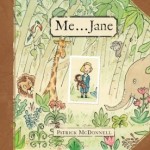 I’ve been so proud to be a judge in the picture book category for the Cybils, and I’m thrilled to announce that we have a winner: Me…Jane by Patrick McDonnell! One of my fellow judges, Eliza Brown, eloquently put into words the sentiments of us all: “Me…Jane is a touching glimpse into the life of a young Jane Goodall as a curious girl with a love of nature, and books, and a stuffed chimpanzee named Jubilee. A unique combination of dreamy watercolor vignettes and nature-inspired vintage engravings complement a simple and evocative text. Every element of the book’s design, from its album-like cover and heavy yellowed pages to the inclusion of photographs and Goodall’s own childhood drawings, helps create a picture book that feels like a relative’s cherished scrapbook. Readers of all ages will take inspiration from a young girl who so fully follows her dreams.”
I’ve been so proud to be a judge in the picture book category for the Cybils, and I’m thrilled to announce that we have a winner: Me…Jane by Patrick McDonnell! One of my fellow judges, Eliza Brown, eloquently put into words the sentiments of us all: “Me…Jane is a touching glimpse into the life of a young Jane Goodall as a curious girl with a love of nature, and books, and a stuffed chimpanzee named Jubilee. A unique combination of dreamy watercolor vignettes and nature-inspired vintage engravings complement a simple and evocative text. Every element of the book’s design, from its album-like cover and heavy yellowed pages to the inclusion of photographs and Goodall’s own childhood drawings, helps create a picture book that feels like a relative’s cherished scrapbook. Readers of all ages will take inspiration from a young girl who so fully follows her dreams.”
I read Me…Jane to a Brownie troop who came in for a storytime about “girl power”. I loved how Me…Jane showed excerpts from Jane Goodall’s actual journals she kept as a child, full of drawings, puzzles, and interesting facts about nature. I showed the girls that journaling is a great way to preserve important ideas and information as well as a way to record thoughts and feelings. I gave each of the girls a notebook and art supplies. We gathered a bunch of nonfiction books we found interesting, and wrote and drew in our journals ideas we wanted to remember. I told them to save these journals so when they’re grown up, they can look back and see how, like Jane, the passions of their youth inspire the lives they’ll lead as adults.
For the past six years the Children’s and Young Adult Bloggers’ Literary Awards (Cybils) have been given by bloggers to the best children’s and young adult books of the year. Our list of fiction picture books featured such good titles, I found the job of judging a very humbling one. Hoots and hollers go out to all our finalists:
 I Had a Favorite Dress written by Boni Ashburn and illustrated by Julie Denos
I Had a Favorite Dress written by Boni Ashburn and illustrated by Julie Denos
I Want My Hat Back by Jon Klassen
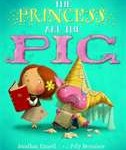 The Princess and the Pig written by Jonathan Emmett and illustrated by Poly Bernatene
The Princess and the Pig written by Jonathan Emmett and illustrated by Poly Bernatene
 Do You Know Which Ones Will Grow? by written by Susan Shea and illustrated by Tom Slaughter
Do You Know Which Ones Will Grow? by written by Susan Shea and illustrated by Tom Slaughter
Read More
The Ballad of Valentine
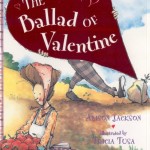 “Oh my darling, oh my darling, oh my darling Valentine,
“Oh my darling, oh my darling, oh my darling Valentine,
I have written forty letters, but you’ve never read a line.”
Alison Jackson and Tricia Tusa have me singing this Valentine’s Day. In their book, The Ballad of Valentine, a narrator tries most every way he can to let his true love know how he feels about her: he trains a homing pigeon and attaches a note with twine, taps a note in Morse code “asking you to please be mine”, rents out a mail car on the westward railroad line, but nothing works. Thank goodness his true love isn’t a gal who just waits around, for although his efforts fail, she’s been busy baking a cake and she asks him to be her Valentine.
After you croon this book along with your little darlings, have them take a look at all the “ine” words. We call our lists of words with the same endings “word families”, so make an “ine” word family with your little ones. You can go through the book and see which ones Alison Jackson used, and then brainstorm more to add to the list. Sitting in a circle, you can pass around a clementine to each student, or roll a ball of twine, and have kids come up with an “ine” word. Practicing rhymes with your Valentines – it’s divine!
For more information, visit alison-jackson.com.
Read MoreQuiet Book and Loud Book
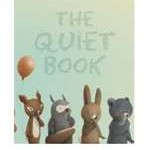 Because it’s February, I decided to dedicate today’s post to a couple of books I love: The Quiet Book and The Loud Book written by Deborah Underwood and illustrated by Renata Liwska. As a librarian, I find I’m partial to The Quiet Book! “There are many kinds of quiet:” Underwood writes. Some are lovely, like “Best friends don’t need to talk quiet” or “Making a wish quiet”. Some will bring giggles of recognition and “uh-ohs!” like “Jelly side down quiet” (I love the animals’ looks of distress as they see the jelly on the rug!) and some give words to feelings that are harder for little ones to express: “Last one to get picked up from school quiet”.
Because it’s February, I decided to dedicate today’s post to a couple of books I love: The Quiet Book and The Loud Book written by Deborah Underwood and illustrated by Renata Liwska. As a librarian, I find I’m partial to The Quiet Book! “There are many kinds of quiet:” Underwood writes. Some are lovely, like “Best friends don’t need to talk quiet” or “Making a wish quiet”. Some will bring giggles of recognition and “uh-ohs!” like “Jelly side down quiet” (I love the animals’ looks of distress as they see the jelly on the rug!) and some give words to feelings that are harder for little ones to express: “Last one to get picked up from school quiet”.
After reading The Quiet Book to kids, they’ll be begging to hear The Loud Book, but before you share it, brainstorm with them the different kinds of loud there are! They may come up with ideas similar to Underwood’s and get to have the thrill of “that’s like what I thought of!” I can imagine that your little ones will come up with some fantastically off-the-wall ideas,(and I encourage you to email Deborah Underwood and Renata Liwska with the best of your bunch!) but I can almost guarantee that they’ll be delightedly surprised with the ideas in the book they’d never considered. Some of my favorites: “Burp during quiet time loud”, “Candy wrapper loud” (Liwska draws the animals in the movie theater), and “Spilling your marbles in the library loud”.
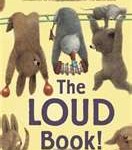 These two books together are perfect if you are working on the Common Core State Standard of Integrating Knowledge and Ideas. You can make a chart to compare the ways to be quiet and the ways to be loud and then try some of ways you’ve read about – preferably outside!
These two books together are perfect if you are working on the Common Core State Standard of Integrating Knowledge and Ideas. You can make a chart to compare the ways to be quiet and the ways to be loud and then try some of ways you’ve read about – preferably outside!
For more information, visit deborahunderwoodbooks.com or renataliwska.com.
Read More



